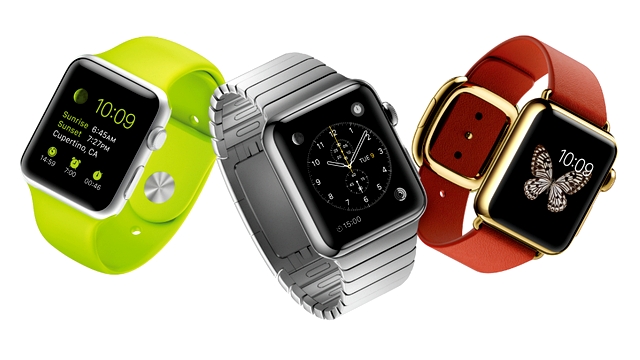The reasons why Apple Watch will succeed

Only the most fortunate among us will ever be able to afford $15,000 for the 18k gold Apple Watch, yet millions around the world recently watched as Tim Cook -- in his first new product launch as CEO -- unveiled Apple’s first major push into the wearables market.
According to The Wearable Future report, adoption rates of wearables parallels that of tablets. After two years, adoption of tablets was 20 percent and today, and 21 percent of American adults already own a wearable device -- so it’s safe to assume that wearables will begin to take off. There are several reasons that Apple’s launch of the Watch will be the beginning of the wearable breakout period.
Learning from rivals mistakes
Apple is certainly not the first to launch a smartwatch. Samsung, LG and Sony have released versions, but none have really caught on. The Kickstarter-backed Pebble has had relative success but even that only sold 1 million watches as of December 2014.
Apple also clearly absorbed the lessons of Google Glass -- when you launch a wearable product it must firstly provide obvious value, and secondly not be overtly intrusive. And fashion counts!
The 'Apple Factor' at work
The Apple Watch sets the bar for what users can expect from wearable devices. The pattern is very familiar to what we have seen with the iPod, iPhone and iPad. Create a simple, intuitive device, design it to have a "cool" factor, setup a complete ecosystem, and have apps that provide utility and value, then package it well and hype the heck out of it!
All of this means that Apple delivers a complete platform, rather than discreet devices. The Apple Watch will seamlessly fit into a ready-made thriving Apple environment, unlike for example, Google Glass.
Faster, slicker interactions
The Apple Watch is specifically designed for quick looks and fast interactions -- the usage paradigm is not apps, but actions. This means you shouldn’t expect to abandon your iPhone for full-featured watch apps.
All of the apps you routinely use such as Messages, Mail, Phone, Calendar, Maps, Siri, Music, etc. will now have watch extensions; there will be thousands of apps available to customize your Watch’s capabilities.
Developers are hard at work trying to condense complicated app usage actions into single taps; the context and ease of use will dictate adoption. We can expect apps such as Twitter, Instagram, Shazam, etc. to be readily available, but companies like Amazon, British Airways, Uber, Sky, etc., among many others are also aggressively launching watch apps.
Why does this signal lift-off for wearables
While it’s still early days, clear shifts are occurring that will lead to mass market adoption of the Apple Watch, and wearables more broadly:
Improvements in the fundamental consumer value proposition
Fitness and Health monitoring devices are driving interest, allowing for a stronger connection to your health. Bio-sensors will also mature to better measure biological signals such as heart rate, blood oxygen and perspiration levels in a non-invasive manner.
Increasing control and automation in the home, the car and at work will be another big area of adoption. Assisting the mobile worker, not just through smartwatches, but augmented reality apps such as Oculus Rift, will also take shape.
Creativity in the design and styles of the devices
The availability of styles and partnerships between technology companies and fashion designers will introduce more stylish devices. Apple Watch will appeal to a wider audience because it has chosen to offer different versions like Standard, Sport and Luxury.
Evolution of the underlying technology
Battery, glass and bi-sensing technology continue to evolve, allowing smartwatches to become more practical. The constant tension between battery life and device capability will continue and while the battery technology will improve, the availability of smaller, lower power consumption components will rise.
Emergence of third party ecosystems and applications
Device manufacturers are now providing open APIs to encourage integration into other applications and the development of new applications. The Apple WatchKit allows developers to create three types of apps for the watch: full featured apps, glances of read-only information and actionable notifications.
Similar APIs like the HealthKit and ResearchKit are also available, allowing apps to easily share data which have been used by fitness apps, such as MyFitnessPal.
Looking forward
Only time will tell if the Apple Watch becomes the next killer Apple device. Personally, it would be nice to see better battery life, a built-in GPS capability and the ability to be un-tethered from the iPhone, but as a first generation product, it will certainly evolve aggressively.
No matter what the outcome, the bottom line is that it is exciting to see the Apple Watch in action and to finally see Apple in the wearables space. Apple has earned the respect and trust of consumers -- that alone might just drive people to buy an Apple Watch.
Published under license from ITProPortal.com, a Net Communities Ltd Publication. All rights reserved.
